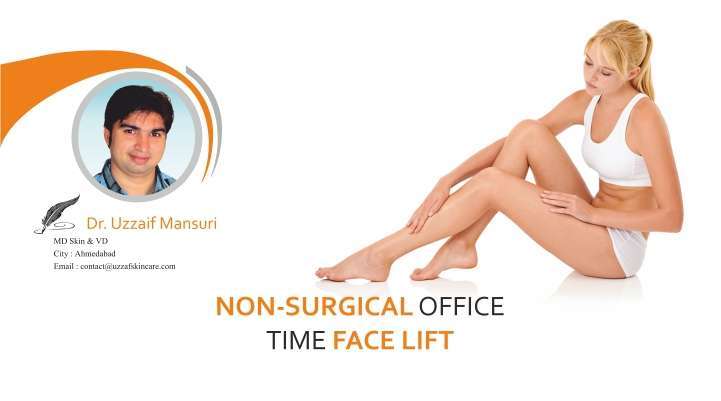Aging is a natural process in which wrinkles, loosening of skin and dryness are common symptoms. Skin loses fat to become slack leading to uneven descent and laxity. Skin becomes more fragile due to the thinning of the epidermis. Thus, aging changes the shape, texture, and color of the face.
Recently, there has been an increase in trend for patients to pursue minimally invasive treatments with reduced risk of side effects and downtime to correct wrinkles and laxity.
Many patients dislike the idea of insertion of non-absorbable threads that remain permanently in the facial soft tissue and so new, absorbable, barbed suture designs have entered the market.
Classification of threads according to:
A) Mode of Absorption
1. Absorbable threads
a)Polydioxanone thread (PDO),
b)Silhouette Soft thread (Poly-I-lactic acid or sculptra in solid form), and fine thread with bi-directional absorbable cone
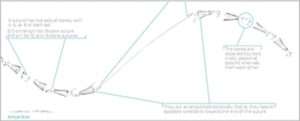
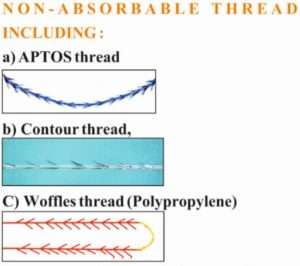
B) Barbed and Non-Barbed Thread (Smooth Threads)
1. Barbed Thread
There are 3 types of barbed thread [9]-[11]:
- Bi-directional thread (Long suture) are inserted into a hollow needle and then placed in the treated area.
- Uni-directional barbed threads (Long sutures) are designed to be anchored to a fixed structure, such as the deep temporal fascia.
Examples include
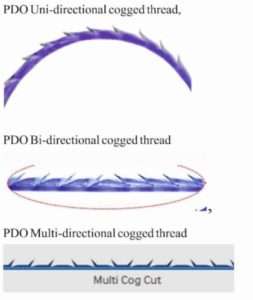
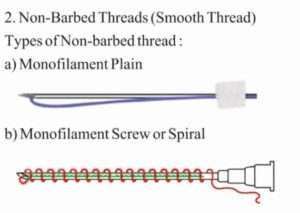
The value of bi-directional thread over uni-directional thread, and non-barbed thread, is that bi-directional thread cannot move in either direction because of the two-way fixation provided by the barbs. However, if there is asymmetry of the face from the thread insertion, uni-directional threads or non-barbed threads allow easier postoperative correction.
C) Length of threads
- Short suture is defined by any thread shorter than 90 mm in length.
- Long suture is defined by any thread longer than 90 mm in length.
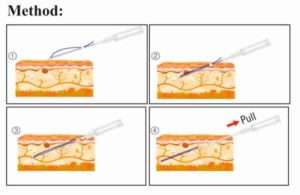
Indications for use:
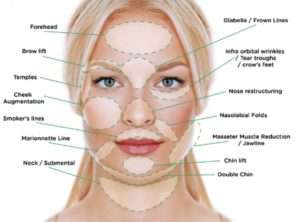
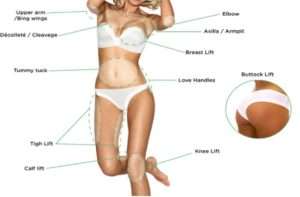
Site & Number of threads:
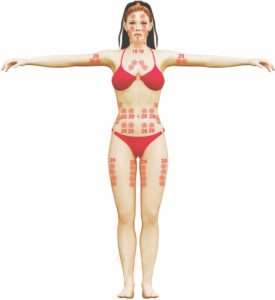
Mechanism of Action:
The axis of lift depends on the direction of insertion and the direction of the cones. The thread material can also create new collagen; for example Poly lactic acid (PLLA). Stimulating threads are made of PDO (polydiaxanone). These threads initiate growth factor release through tissue trauma. Fibroblast activation commences new collagen formation, which is remodeled at four weeks. New collagen has a tendency to shrink as it is remodeled. The effect is one of volume and shrinkage due to the sheer number of threads inserted. Stimulating threads should be considered as micro fillers and lifters, providing a meshwork of new collagen, with initial tissue support.
Depth for Insertion
The correct tissue plane for the insertion of PDO threads is the subcutaneous tissue for barbed threads (superficial musculoaponeurotic system or SMAS layer). If the threads are placed too superficially in the dermal plane then they could be felt and may even be visible in the skin. In this plane, they will not achieve the correct degree of lifting of the tissues or stimulate collagen production. If the PDO threads are placed too deeply, there is a greater risk of damage to the facial artery and vein, the facial nerve and other anatomical structures. Aesthetic practitioners should familiarise themselves with a detailed knowledge of the anatomy of the face and neck.
Side Effects
It includes swelling, bruising, infection (usually due to poor technique), and thread migration. Post-operative skin folds may also occur. Most of these side effects are transient and resolve over several days. Threads can also move away from the site of insertion but this is more common with uni-directional or bi-directional threads. In my experience, the newer 3D multi-direction cog threads do not migrate. Small mono and spiral threads may protrude from the skin and have to be cut back. This is usually due to poor technique, but can also occur spontaneously some days after insertion. More serious complications include facial nerve damage, which may result in facial paralysis and blood vessel damage, especially when needle threads are used.
Length of results
However, short-term clinical studies have shown that the results of the PDO thread lifts were maintained, on the whole, for six months with a little loss of facial elasticity. However results may last 12, or sometimes up to 18 months.
Conclusion
According to the collected data that has been summarized in this review, several techniques of the thread lift procedure have been indicated. However, positive results depend on the process of patient selection (good candidates) as well as selection of the most appropriate technique for the patient. A holistic approach to patient management is also proposed to ensure the patient receives optimal results. This technique can also be combined with other treatments, such as the placement of fillers, platelet rich plasma or other products.
Patient Based Algorithm
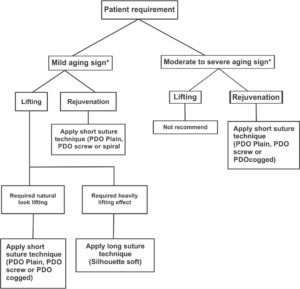
*-*-*

